How To Play Fast Fingerpicking Guitar Solos
by Simon Candy
 In this lesson, you learn how to generate fast fingerpicking guitar solos using a technique that features the open strings of your guitar and the pentatonic scale patterns. This technique lends itself very well to playing fast fingerpicking solos on your guitar, due to the consistency of what your picking hand is doing throughout.
In this lesson, you learn how to generate fast fingerpicking guitar solos using a technique that features the open strings of your guitar and the pentatonic scale patterns. This technique lends itself very well to playing fast fingerpicking solos on your guitar, due to the consistency of what your picking hand is doing throughout.
The video below will help reinforce and further train the concepts taught in this article, so bookmark it to check out after working through this lesson:
Fast Fingerpicking Riffs
Playing fast fingerpicking guitar solos can be made easier using a technique that involves a consistent pattern of forward and backward banjo roll patterns with your picking hand. To make this technique even simpler, we can enhance the consistency of our fretting hand by using melodic sequences.
Sequences in music come in different types, and today we will be using melodic sequences, which means playing a repeating pattern of notes within the different pitch ranges of a scale. If you are not familiar with sequences, you will see what I mean in a moment.
For the sequences I present to you today, I will be using pattern 3 of the pentatonic scale in the key of G Major. Therefore you need to begin this pattern from the 5th fret on the 6th string to be in this key:

Fingerpicking Riff 1
This first fingerpicking riff is a sequence that descends the pentatonic scale. Having said that, you could also ascend it too, to get more mileage from the riff.
Here is the sequence applied to the top two strings of the scale:
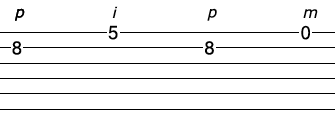
Once you have this in your fingers, you simply run it down the remaining pairs of strings in pattern 3 like so:
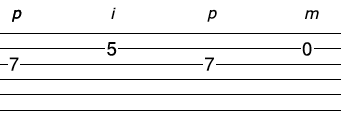
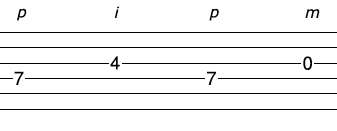


Here is the sequence descending all 6 strings of pattern 3:

This is the nature of a melodic sequence. It’s just a repeating pattern, using different notes in the scale. The consistency of what your fretting hand is now doing, combined with the consistent pattern your picking hand is doing, makes it much easier to generate fast fingerpicking guitar solos.
Another way you could take this same sequence, and apply it musically to generate fast riffs, is to move it horizontally up the fretboard on any 2 adjacent string sets.
Here is an example of that using strings 2 and 3:

As I move up the fretboard, I’m making sure I stay in key by only using notes from the G major pentatonic scale.
Fingerpicking Riff 2
This next fingerpicking guitar riff is a 6 note sequence that ascends the scale.
Here is the sequence on the bottom three strings of pattern 3:
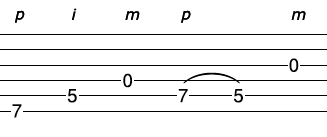
Once you have this in your fingers, you simply run it up the remaining strings sets of the scale like so:

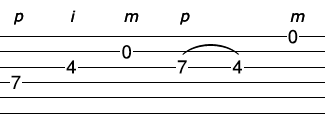
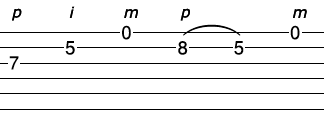
Here is the sequence ascending all 6 strings of pattern 3:

As with any sequence, you can both ascend and descend the scale, so here is the same sequence descending pattern 3:

Fingerpicking Riff 3
This third and final fingerpicking riff is a forward banjo roll pattern. This is what your picking hand has been doing for the most part throughout this article series, so we might as well play an actual banjo roll with it, like so:

Banjo rolls in themselves can create great fast fingerpicking riffs for your guitar playing.
The above example demonstrates a banjo roll played in a single position. When played in conjunction with a chord progression, it can produce a great sound. As the chords change in the progression, the notes within the banjo roll will relate differently to each chord, resulting in a unique sound with each change.
Another option is to take the banjo roll and run it up and down the fretboard.
Here is an example:

You could apply this idea with the banjo roll to other strings sets too, to get even more mileage out of it.
Watch the video below to discover how to apply this open string fingerpicking technique to the major scale to create even more possibilities for your playing:
Check out more open string fingerpicking riffs that make it easy to play fast on guitar